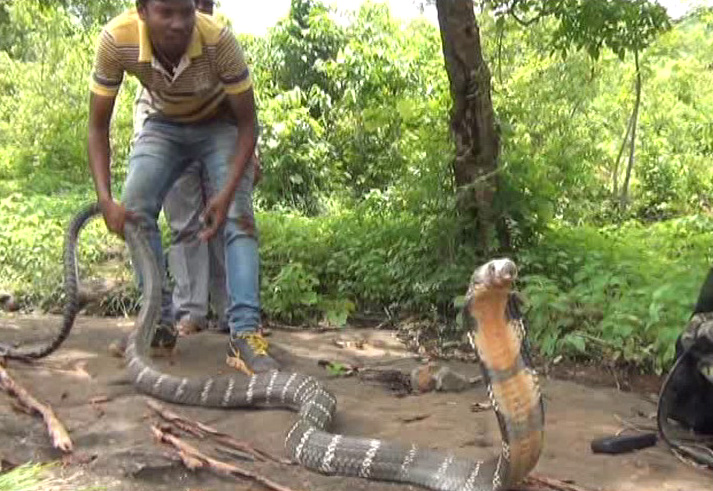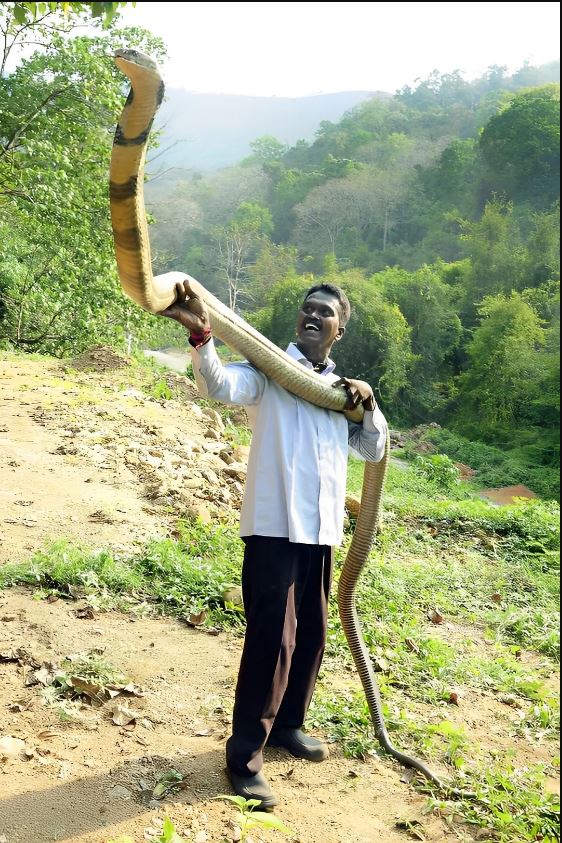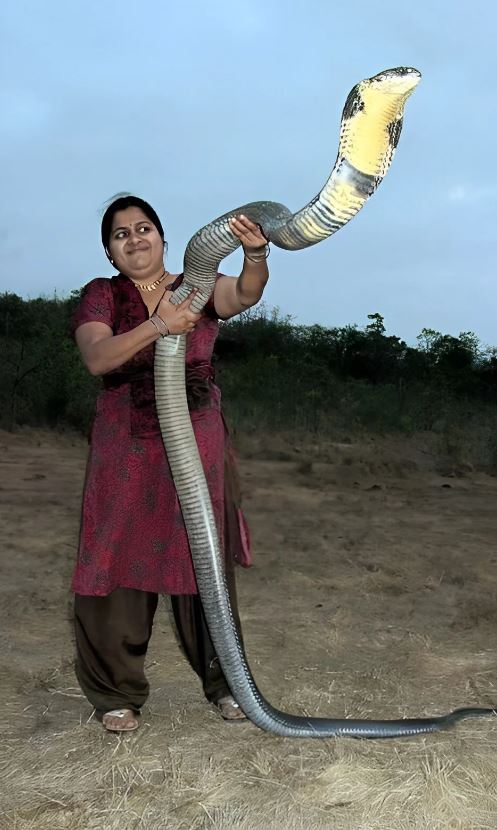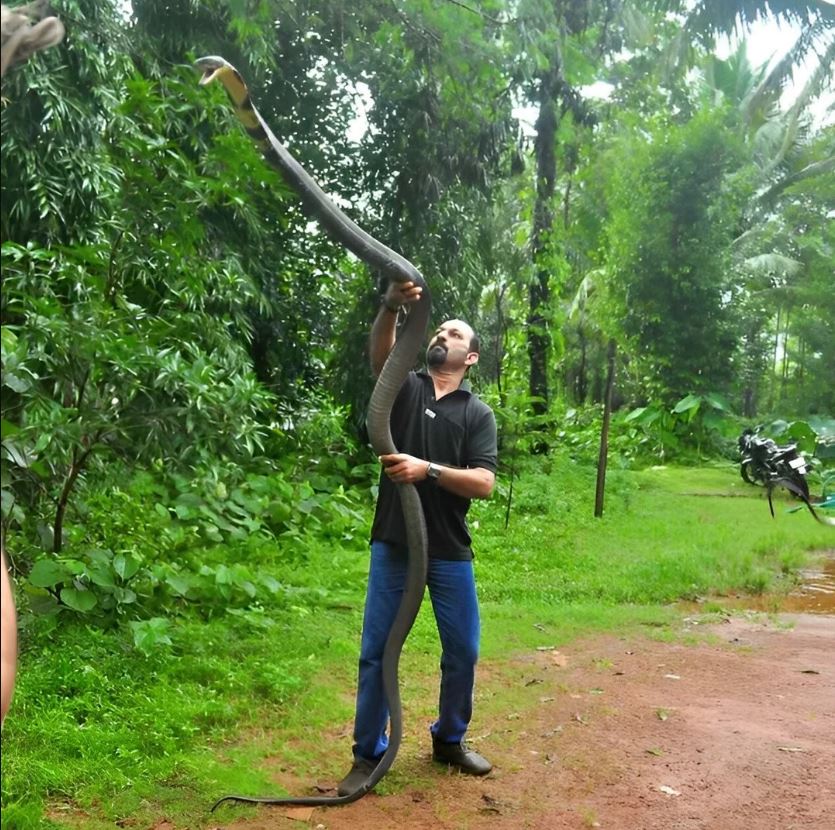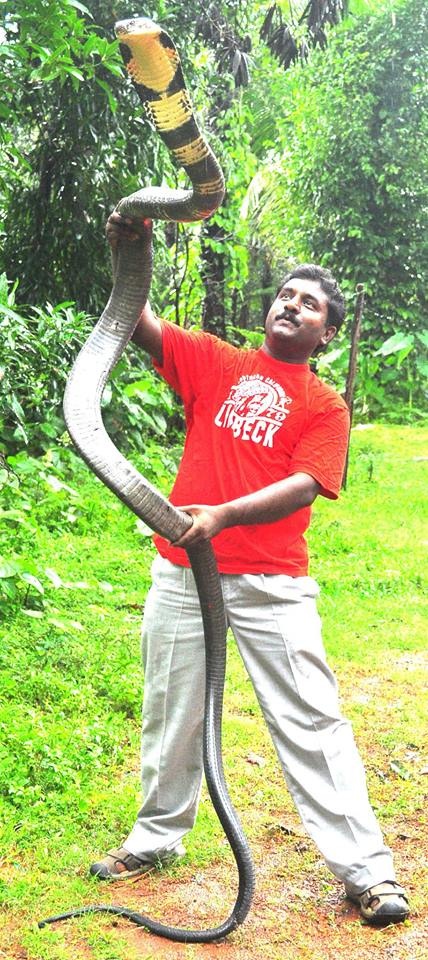The king cobra (Ophiophagus hannah)
The king cobra (Ophiophagus hannah) is a fascinating and deadly elapid snake species that is endemic to South and Southeast Asia. As the sole member of the genus Ophiophagus, it is the world’s longest venomous snake and possesses a potent neurotoxic venom that makes it a feared predator and a dangerous threat to humans and other animals alike. In this article, we will explore the many aspects of the king cobra, from its physical characteristics to its behavior, habitat, diet, and conservation status.
The king cobra is a large, robust snake that can grow to an average length of 3.18 to 4 m (10.4 to 13.1 ft), although some specimens have been known to reach up to 5.85 m (19.2 ft) in length. It is characterized by its distinctive appearance, with a broad, flat head that is slightly wider than its neck, and its long, slender body that is covered in smooth scales. Its coloration can vary depending on its location, with individuals from the northern parts of its range being lighter in color, while those from the southern parts are darker. The king cobra’s belly is usually a creamy white, while its dorsal surface is brown, olive, or black.
One of the most striking features of the king cobra is its ability to raise the front part of its body off the ground, forming a distinctive hood. This is achieved by the expansion of the ribs in the neck region, which are attached to the skin, creating a fan-like structure. When threatened or cornered, the king cobra will assume this posture as a warning to potential predators, displaying its intimidating hood while hissing loudly to ward off any perceived threats.
The king cobra’s venom is highly potent and neurotoxic, meaning that it affects the nervous system of its prey, causing paralysis and eventual death. The venom of the king cobra is not only lethal to small animals but can also be fatal to humans if not treated promptly. The venom contains a mixture of toxins, including neurotoxins, cardiotoxins, and cytotoxins, which affect the nervous system, heart, and blood vessels of its prey. It is estimated that a single bite from a king cobra can deliver enough venom to kill 20 humans or a large elephant.
Despite the potency of its venom, the king cobra is not an aggressive snake and will usually only bite in self-defense or when it feels threatened. It will often try to avoid confrontation with humans, preferring to retreat when possible. However, if cornered or provoked, it can become extremely dangerous, and its quick reflexes and lightning-fast strikes make it a formidable predator.
The king cobra is a solitary and diurnal snake, meaning that it is most active during the day and spends much of its time hunting for food. Its diet consists mainly of other snakes, including venomous species such as cobras and kraits, as well as non-venomous species like pythons and rat snakes. The king cobra is an expert hunter and will often use its keen sense of smell to locate its prey before launching a surprise attack. Once it has located its prey, it will use its long fangs to deliver a quick and lethal bite, injecting its venom into the body of its prey.
When not hunting, the king cobra will spend much of its time basking in the sun, often on tree branches or other elevated positions. It is a skilled climber and can climb trees and other structures with ease, using its powerful muscles and hooked teeth to grip onto surfaces. It is also a strong swimmer and can move quickly through water, using its
